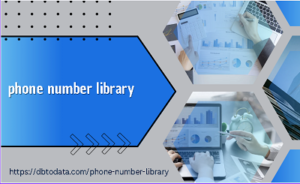Your website is a core component of your B2B organization. As the primary channel for audiences to learn about your brand and consume your content, it is extremely valuable in driving and facilitating many marketing efforts. In general, a website should:
Become the digital window of your business
Encourage people to continue learning and learn more
Direct people to perform certain actions when they visit
51% of B2B companies spend the majority of their marketing budget on website development. Businesses clearly see the importance of a strong web presence, but many still lack the basic requirements for an effective B2B website. Here are six key elements to ensure your website’s effectiveness.
1. First impression
Your website creates the first impression for many visitors who learn about your business, and they need to clearly represent who you are and what you offer. 2.6 seconds is how long it takes someone to decide what they think of your website, which means it takes the same amount of time for your website to make an impression on them. 94% of first impressions are influenced by the look and design of your website. Focusing on these elements that stay consistent with your brand can help your website make a good first impression.
2. Engagement and relevant content
You’ve heard it before, and it hasn’t changed. Content is king. Relevant and interesting content drives traffic, builds thought leadership, and delivers value to your buyers and prospects.
The basic rule is to keep your content concise and relevant afghanistan phone number library while focusing on the problems and needs of your prospects and customers. Content should be in a variety of formats, from web copy, blogs and articles, to downloadable items such as case studies, white papers, short videos, presentations and infographics. Limiting delivery methods will only reduce your potential visibility.
Consider asking visitors to fill out a form if they want to access your most valuable content. Gating certain content will give you a short list of visitors who are just one step away from becoming customers.
3. Engaging Landing Page
When someone visits your website as a result of a marketing campaign or clicks from a hyperlink on an external website, they are usually directed to a specific destination page. Dynamic landing pages engage linkedIn management tools visitors and can make the difference between them staying or disappearing after a few seconds.
The goal is to direct the visitor to the desired path. If it’s a form submission you’re looking for, make the form the obvious next step. If it’s downloading material, make the button stand out with a certain color or placement on the page. Design elements are essential to attracting and directing visitors to the right actions and content.
4. Social Media
Social media is an integral part of your B2B strategy. Integrating gambler data social channels into your website is a simple and necessary process. Most content management systems offer plugins or templates that allow for simple and direct connections that are easily accessible to your visitors.
Think about how you will use social media. It should be viewed as an additional communication channel for your business, a way to expand your online presence beyond your website. Sharing new original content or even third-party content on social media can help you build a connection between social media and your website. Make sure you have social sharing buttons on your website. This will entice your visitors to share your content with their networks.

